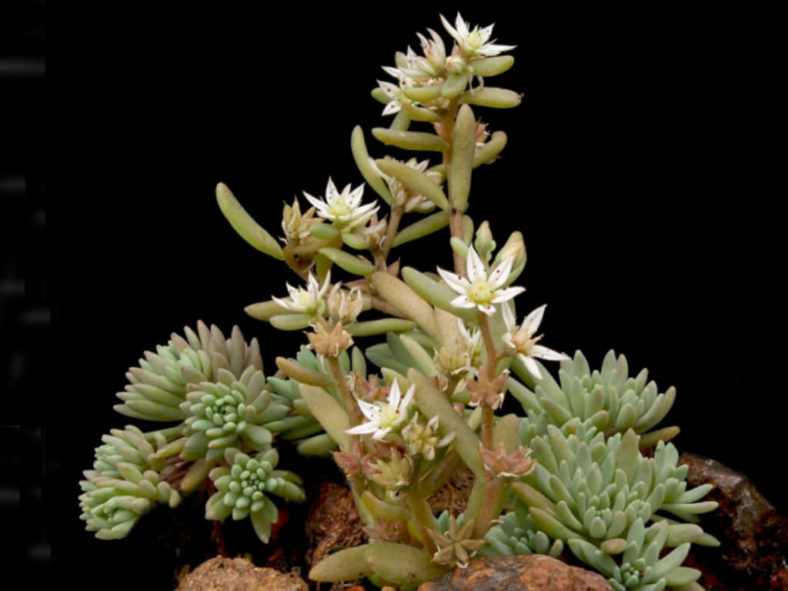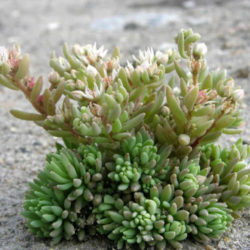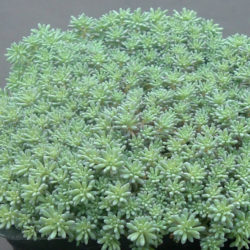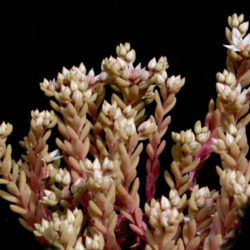Scientific Name
Sedum hispanicum L.
Common Name(s)
Spanish Stonecrop
Synonym(s)
Sedum guettardii, Sedum heptapetalum, Sedum semiglabrum, Sedum whitmanni, Sedum wightmannianum
Scientific Classification
Family: Crassulaceae
Subfamily: Sempervivoideae
Tribe: Sedeae
Genus: Sedum
Description
Sedum hispanicum is an annual or sometimes perennial succulent with erect or ascending stems that bear narrow, green, sometimes glaucous leaves. The stems can grow up to 8 inches (20 cm) long, usually branching from the base. The leaves are soft, fleshy, linear to oblong, and can reach up to 0.8 inches (2 cm) long and 0.12 inches (0.3 cm) wide. As the weather warms, the leaves can turn blue-grey.
The flowers are small, star-shaped with 5 to 9 white petals with a pink to reddish median line, and appear solitary or in up to 8-flowered cymes from late spring to summer.
Origin
Sedum hispanicum is native to southern and central Europe, the Balkans, Turkey, Lebanon, Palaestina, Caucasus, and Iran and naturalized in Japan. It grows on the coast, lower, middle, and upper mountains.

Hardiness
USDA hardiness zone 5a to 10b: from −20 °F (−28.9 °C) to 40 °F (+4.4 °C).
How to Grow and Care
When growing Sedum, keep in mind that Sedum plants need very little attention or care. They will thrive in conditions many other plants thrive in but do just as well in less hospitable areas. They are ideal for that part of your yard that gets too much sun or too little water to grow anything else. A common name for Sedum is Stonecrop because many gardeners joke that only stones need less care and live longer.
Sedum is easily planted. For shorter varieties, laying the plant on the ground where you want it to grow is normally enough to start the Sedum plant there. They will send out roots from wherever the stem touches the ground and root itself. If you want to ensure that the plant will start there, add a very thin covering of soil. You can break off one of the stems for taller Sedum varieties and push it into the ground where you want to grow it. The stem will root very easily, and a new plant will be established in a season or two.
See more at How to Grow and Care for Sedum.
Links
- Back to genus Sedum
- Succupedia: Browse succulents by Scientific Name, Common Name, Genus, Family, USDA Hardiness Zone, Origin, or cacti by Genus
Photo Gallery
Click on a photo to see a larger version.


